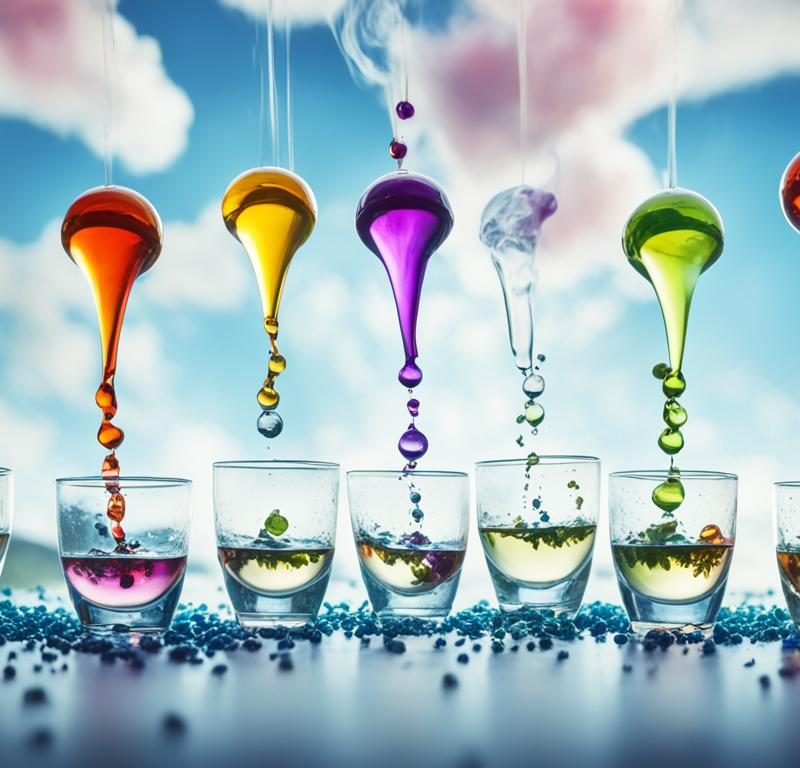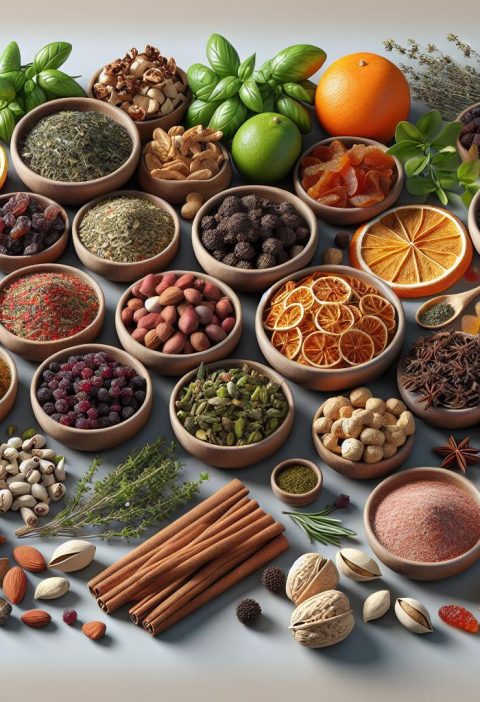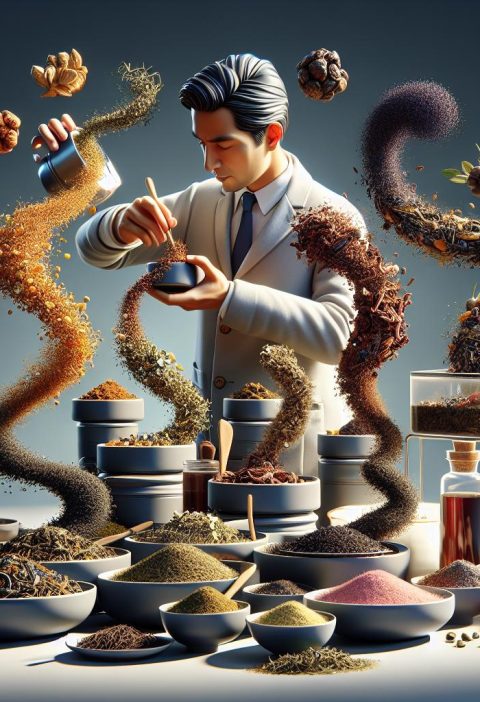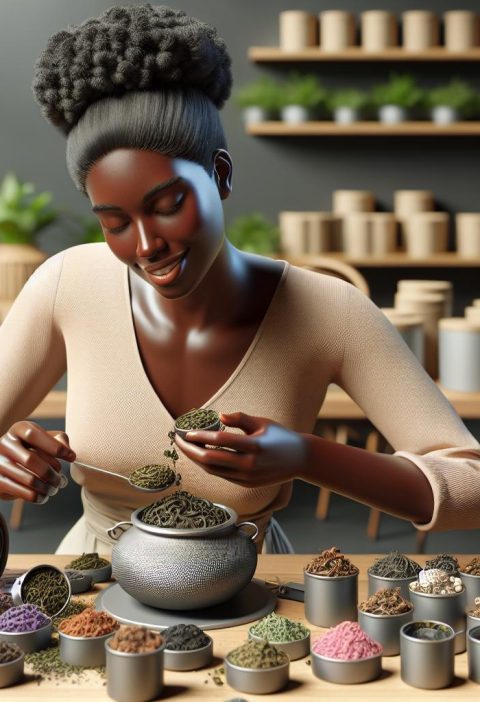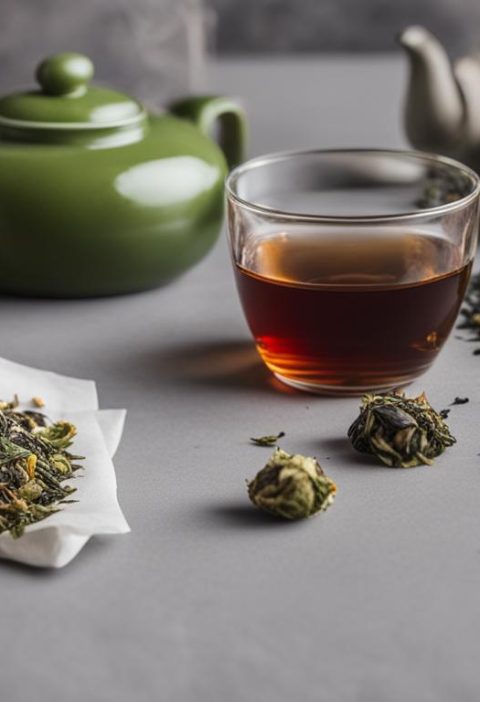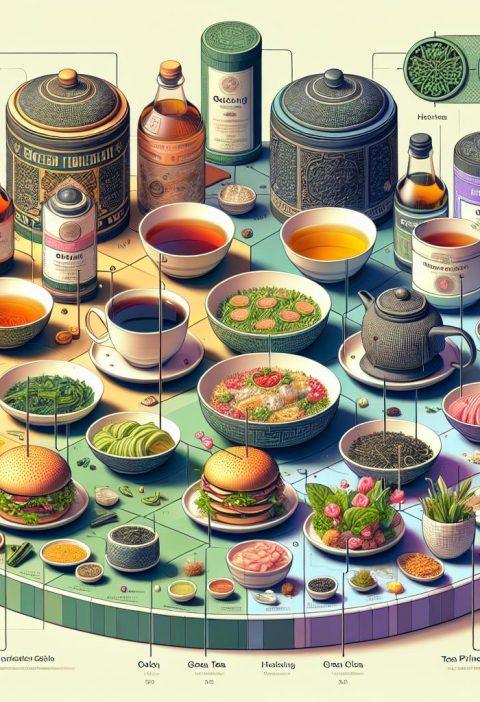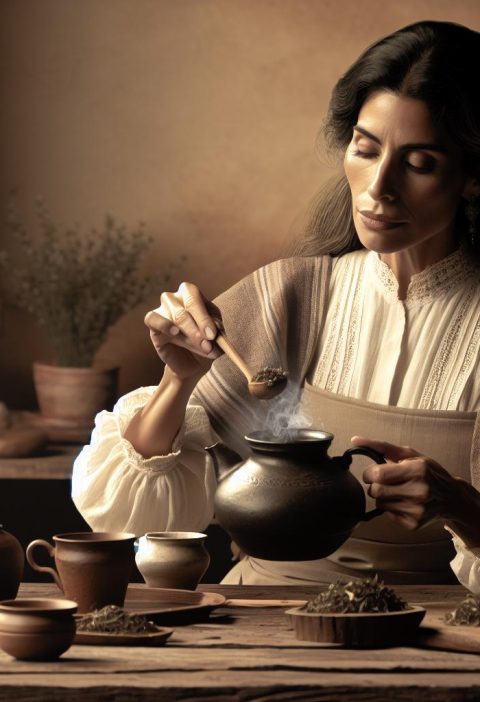Tea has been enjoyed for centuries, and there are numerous ways to enhance the flavor and experience of this beloved beverage. From traditional brewing techniques to innovative approaches, tea lovers have a variety of methods to choose from to unlock the full potential of their brew and indulge in a flavorful infusion.
Traditional Tea Drinking Methods
Traditional tea drinking methods, such as the Japanese tea ceremony and Chinese gongfu tea, elevate the experience of tea drinking to a meditative and mindful practice. These rituals, accompanied by specific utensils and careful steeping, allow tea enthusiasts to fully immerse themselves in the beauty and tranquility of tea.
Key Takeaways:
- Japanese tea ceremony and Chinese gongfu tea are traditional tea drinking methods that enhance the tea drinking experience.
- These rituals involve specific utensils and steeping techniques.
- Tea enthusiasts can fully immerse themselves in the beauty and tranquility of tea through traditional tea drinking methods.
Innovative Tea Brewing Techniques
Innovative tea brewing techniques have emerged, offering fresh and exciting ways to enjoy tea. Cold brewing tea, for example, involves steeping tea leaves in cold water for an extended period, resulting in a refreshing and smooth infusion. Specialized tea infusers and strainers make it easy to brew loose leaf tea on-the-go, providing convenience without compromising flavor.
Key Takeaways:
- Cold brewing tea is a popular innovative technique that results in a refreshing and smooth infusion.
- Specialized tea infusers and strainers allow for convenient brewing of loose leaf tea.
- Exploring innovative tea brewing techniques can provide exciting new ways to enjoy your tea.
Tea Mixology and Mocktails
Tea can also be used as an ingredient in mixology and mocktails. By combining different types of tea with herbs, fruits, and other ingredients, tea lovers can create a range of flavorful concoctions. From refreshing iced teas to tea-infused cocktails, tea mixology encourages creativity and allows for personalized drinks that cater to individual taste preferences.
Key Takeaways:
- Tea can be used to create a variety of flavorful mixology and mocktail creations.
- Combining different types of tea with herbs, fruits, and other ingredients allows for personalized and creative drinks.
- Tea mixology is a fun way to experiment and explore new flavor combinations.
Tea Pairings and Food Combinations
Tea is a versatile beverage that pairs well with a variety of foods. Delicate white teas complement light and subtle flavors, while robust black teas pair excellently with rich desserts. Oolong teas with floral notes enhance the nuances of aromatic cheeses. Tea and food combinations offer a harmonious experience that enhances both the tea and the culinary flavors.
Key Takeaways:
- Tea can be paired with various foods to create harmonious flavor combinations.
- Different types of tea complement different flavors and dishes.
- Exploring tea and food pairings can enhance the overall culinary experience.
The Art of Steeping Tea
Steeping tea is the process of extracting the flavor and healthy compounds of tea by infusing tea leaves or blends in hot water. The steeping time varies depending on the type of tea. Green tea requires 3-4 minutes at 175°F, while black tea, oolong tea, and white tea typically steep for 3-5 minutes at 195°F. Herbal teas, both dried and fresh, may require longer steeping times, ranging from 15 minutes to 30 minutes at 212°F.
Key Takeaways:
- Steeping tea involves infusing tea leaves or blends in hot water to extract flavor and health benefits.
- Each type of tea has its own optimal steeping time and temperature.
- Understanding the art of steeping tea allows for the creation of a perfect cup of tea.
Different Methods of Brewing Tea
There are various methods of brewing tea, including using teabags, loose leaf tea, and herbal tea. Teabags offer convenience, while loose leaf tea allows for more control over the infusion process. Herbal teas can be brewed using both dried and fresh ingredients, with fresh herbal teas requiring longer steeping times. Additionally, Tea Drops, compressed and ground leaf teas, offer an instant and flavorful brew without the need for steeping.
Key Takeaways:
- Tea can be brewed using teabags, loose leaf tea, and herbal ingredients.
- Teabags provide convenience, while loose leaf tea allows for more control over the brewing process.
- Tea Drops offer an instant and flavorful brew without the need for steeping.
Steeping Tea with Cold Water
Cold brewing tea is an alternative method that involves steeping tea leaves in cold water for an extended period of time. This results in a refreshing and less bitter infusion, as the flavors are slowly extracted. Cold steeping times may vary, with some recommendations suggesting a minimum of 12 hours for optimal flavor extraction. Additionally, Tea Drops can be used to easily prepare cold brewed tea without the wait time.
Key Takeaways:
- Cold brewing tea offers a refreshing and less bitter infusion.
- Flavors are slowly extracted when tea leaves are steeped in cold water.
- Tea Drops can be used to prepare cold brewed tea without the need for lengthy steeping times.
Alternative Tea Steeping Methods
Tea enthusiasts have explored alternative tea steeping methods, such as using pour-over cone-shaped pots, specialized tea brewing gadgets like IngenuiTEA, and glass teapots with infused baskets. These methods offer unique ways to enjoy and experiment with tea brewing. Some coffee houses even offer green tea brewed through espresso machines, providing a bold and flavorful tea experience.
Key Takeaways:
- Alternative tea steeping methods offer unique ways to brew and enjoy tea.
- Pour-over cone-shaped pots, specialized gadgets, and infused baskets provide alternative brewing options.
- Green tea brewed through espresso machines can provide a bold and flavorful tea experience.
The Benefits of Tea Drops
Tea Drops offer a convenient and instant way to enjoy a flavorful brew. They are compressed and ground leaf teas that dissolve when hot water is added. With a wide range of flavors and blends, Tea Drops provide the benefits of tea without the need for steeping or using a separate infuser. They are also portable and easy to use, making them ideal for tea lovers on the go.
Key Takeaways:
- Tea Drops are compressed and ground leaf teas that dissolve in hot water.
- They offer a convenient and instant way to enjoy tea without the need for steeping.
- Tea Drops are portable and easy to use, perfect for tea lovers on the go.
Conclusion
There is a wide world of innovative tea steeping methods to explore, from traditional rituals to modern techniques. Each method offers a unique way to unlock the full flavor potential of tea and enhance the tea drinking experience. Whether using traditional brewing techniques, experimenting with alternative methods, or enjoying the convenience of Tea Drops, tea enthusiasts can indulge in a flavorful and satisfying cup of tea.
Traditional Tea Drinking Methods
Traditional tea drinking methods have long been revered for their ability to transform a simple act into a profound experience. In cultures such as Japan and China, tea ceremonies and gongfu tea rituals have been practiced for centuries, infusing the act of tea drinking with mindfulness and tranquility.
Engaging in traditional tea drinking methods allows tea enthusiasts to fully immerse themselves in the beauty and serenity of tea. These rituals are meticulously performed with specific utensils and steeping techniques, creating a sensory journey that transcends mere refreshment.
The Japanese Tea Ceremony
One of the most well-known traditional tea drinking methods is the Japanese tea ceremony, also known as chanoyu or sado. This ceremonial practice emphasizes harmony, respect, and tranquility. Each element of the tea ceremony, from the preparation of matcha (powdered green tea) to the precise movements of the tea utensils, is carefully orchestrated.
Participants in the Japanese tea ceremony focus on the present moment, immersing themselves in the ceremony’s meditative atmosphere. The ritual fosters a deep appreciation for the art of tea, its connection to nature, and the hospitality extended to guests.
The Chinese Gongfu Tea Ceremony
In China, the gongfu tea ceremony is a revered tradition that celebrates the art of brewing tea. Gongfu, meaning “skillful” or “excellence,” aptly describes the meticulous approach to brewing tea in this method.
The gongfu tea ceremony involves using small teapots and tiny teacups, ensuring that each infusion captures the essence and subtleties of the tea. The tea leaves are steeped multiple times, with each brewing showcasing a different facet of the tea’s flavor profile. Through this method, tea enthusiasts can savor the evolving taste of tea with each steeping, fostering a deeper connection to the leaves and the brewing process.
The Tranquility of Traditional Tea Drinking Methods
Traditional tea drinking methods offer a unique opportunity to cultivate a sense of calm and mindfulness in our fast-paced lives. By embracing the rituals and practices of the Japanese tea ceremony, the Chinese gongfu tea ceremony, and other traditional approaches, we can escape the noise and distractions of the modern world.
Through the deliberate actions of measuring tea leaves, pouring water at the correct temperature, and steeping with precision, we enter a state of focused relaxation. The aromas, flavors, and textures of the tea engage our senses and provide a moment of peace and contemplation.
Let us now explore some of the innovative brewing techniques that have emerged, allowing tea enthusiasts to expand their horizons and discover new dimensions of tea enjoyment.
| Traditional Tea Drinking Methods | Country | Ceremony | Utensils |
|---|---|---|---|
| Japanese Tea Ceremony | Japan | Chanoyu or Sado | Chawan (tea bowl), Chasaku (tea scoop), Chasen (tea whisk) |
| Chinese Gongfu Tea Ceremony | China | Gongfu Cha | Gaiwan (lidded bowl), Yixing teapot, small teacups |
Innovative Tea Brewing Techniques
As tea enthusiasts, we are always seeking new and exciting ways to enhance our tea-drinking experience. That’s where innovative tea brewing techniques come in. These methods offer a fresh perspective on brewing tea, allowing us to unlock unique flavors and indulge in a truly satisfying cup. One such technique is cold brewing tea.
Cold brewing tea involves steeping tea leaves in cold water for an extended period, typically overnight in the refrigerator. This slow infusion process extracts the flavors from the tea leaves gradually, resulting in a refreshing and smooth brew that is less bitter compared to traditional hot steeping methods. Cold brewed tea is perfect for summer days or when you desire a lighter and more delicate flavor profile.
To try cold brewing tea at home, follow these simple steps:
- Select your favorite loose leaf tea. Green tea, white tea, and herbal tea blends are particularly well-suited for cold brewing.
- Place the tea leaves in a tea infuser or strainer.
- Fill a glass or pitcher with cold water.
- Submerge the tea infuser or strainer in the cold water.
- Let the tea steep in the refrigerator for at least 4-12 hours, depending on your desired strength.
- Once the steeping time is complete, remove the tea leaves and pour the cold brewed tea into a cup.
- Add ice cubes or garnish with fresh fruits for an extra burst of flavor, if desired.
Cold brewing tea offers a convenient and refreshing way to enjoy your favorite blends. The slow infusion process allows for a more delicate extraction of flavors, resulting in a mellow and less bitter brew. It’s the perfect technique for creating thirst-quenching iced teas or unique tea-based cocktails.
Aside from cold brewing, there are other innovative tea brewing techniques worth exploring. From using specialized tea infusers and strainers to experimenting with different water temperatures and steeping times, the possibilities are endless. These techniques allow us to personalize our tea experience, discovering new nuances and unlocking the full potential of our favorite teas.
| Tea Brewing Technique | Benefits |
|---|---|
| Cold Brewing | – Smooth and refreshing flavor – Less bitterness – Ideal for iced teas |
| Specialized Tea Infusers and Strainers | – Convenient and mess-free – Allows for brewing loose leaf tea on-the-go |
| Experimenting with Water Temperatures and Steeping Times | – Unlocks different flavor profiles – Customizable brewing experience |
Tea Mixology and Mocktails
Tea is not limited to traditional brewing methods; it can also be a versatile ingredient in mixology and mocktails. By combining different types of tea with herbs, fruits, and other ingredients, tea lovers can create a range of flavorful concoctions that tantalize the taste buds. Embracing the art of tea mixology allows for endless creativity and the opportunity to craft personalized drinks that cater to individual taste preferences.
Tea-infused mocktails:
- Refreshing iced teas with a twist of citrus or berries
- Earl Grey tea-based mocktail with a touch of lavender and lemon
- Green tea mojito with fresh mint leaves and lime
- Hibiscus tea spritzer with sparkling water and a hint of ginger
Tea-infused cocktails:
- Elderflower and chamomile tea gin and tonic
- Jasmine green tea mule with vodka, ginger beer, and lime
- Matcha margarita with tequila, lime juice, and a green tea rim
- Rooibos tea Old Fashioned with bourbon, orange peel, and bitters
The possibilities are endless when it comes to tea mixology. From vibrant and fruity to sophisticated and herbaceous, tea-infused mocktails and cocktails add a unique twist to traditional drink recipes. Whether it’s a refreshing iced tea for a hot summer day or an elegant tea-infused cocktail for a special occasion, these creations showcase the versatility of tea in the world of mixology.
Tea Mixology: A Beautiful Blend of Flavors
| Tea Blend | Main Ingredients | Flavor Profile |
|---|---|---|
| Earl Grey | Lavender, lemon, simple syrup | Citrusy, floral, aromatic |
| Hibiscus | Ginger, sparkling water, fresh fruits | Tangy, refreshing, tropical |
| Matcha | Tequila, lime juice, agave syrup | Bold, earthy, energizing |
| Rooibos | Bourbon, orange peel, bitters | Smooth, smoky, warm |
Tea Pairings and Food Combinations
Tea is a versatile beverage that pairs well with a variety of foods. Whether you’re enjoying a cup of delicate white tea or sipping on a robust black tea, the right tea pairing can enhance the flavors of your meal and create a harmonious experience for your palate.
Some food and tea combinations have been cherished for centuries, while others offer a more innovative twist to excite your taste buds. From light and subtle flavors to rich desserts and aromatic cheeses, there are endless possibilities to explore. Let’s dive into some delightful tea pairings and food combinations that will elevate your tea experience.
White Tea Pairings
White tea is known for its delicate and nuanced flavors. Its subtle sweetness and floral undertones make it a perfect companion for light and fresh dishes.
- Pair white tea with seafood salads, such as shrimp or crab salad, to complement the delicate flavors of the seafood.
- Enjoy a cup of white tea with grilled or poached chicken, enhancing the meat’s natural tenderness with floral notes.
- Indulge in a slice of angel food cake or a fruit tart alongside your white tea for a delightful dessert pairing.
Black Tea Pairings
Robust and full-bodied, black tea can stand up to bold flavors and rich desserts. Its boldness and depth create a perfect balance with various culinary delights.
- Sip on black tea while enjoying a hearty breakfast of eggs, bacon, and toast, as it complements the savory flavors and cleanses the palate.
- Pair black tea with dark chocolate or chocolate-based desserts to enhance the richness and indulge in a moment of pure decadence.
- Enjoy black tea with a slice of spiced cake or a rich coffee-flavored dessert, as the tea’s boldness complements the aromatic and complex flavors.
Oolong Tea Pairings
Oolong tea, with its unique flavor profile featuring floral and fruity notes, pairs exceptionally well with various cheeses and aromatic dishes.
- Pair oolong tea with a selection of creamy and aromatic cheeses, such as Gruyere or Camembert, allowing the floral notes of the tea to enhance the cheese’s complexity.
- Enjoy a cup of oolong tea alongside a stir-fried or grilled dish seasoned with ginger and garlic, as the tea’s fruity undertones complement the spices.
- Pair oolong tea with a fruit-based dessert, such as a pear tart or peach cobbler, to create a harmonious blend of flavors.
These are just a few examples of the endless tea pairings and food combinations to explore. Whether you’re a tea enthusiast or a culinary adventurer, experimenting with different pairings will elevate your tea experience and open up a world of flavorful possibilities.
So next time you brew a cup of tea, take a moment to consider the perfect culinary companion that will enhance both your tea and your meal.
| Tea Type | Food Pairing |
|---|---|
| White Tea | Seafood salad, grilled or poached chicken, angel food cake, fruit tart |
| Black Tea | Eggs, bacon, toast, dark chocolate, spiced cake, coffee-flavored desserts |
| Oolong Tea | Aromatic cheeses (Gruyere, Camembert), stir-fried dishes with ginger and garlic, fruit-based desserts |
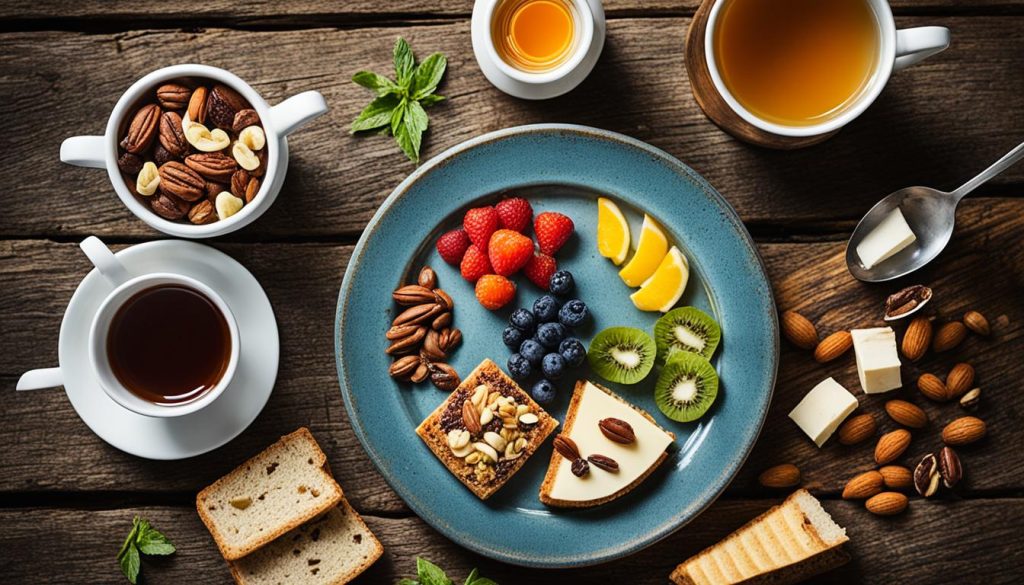
The Art of Steeping Tea
Steeping tea is a fundamental process that allows us to unlock the full flavor and enjoy the health benefits of this delightful beverage. By infusing tea leaves or blends in hot water, we extract the aromatic compounds, essential oils, and antioxidants that make each cup of tea unique.
Understanding the proper brewing techniques and steeping times is crucial to achieving a perfect cup of tea. Different types of tea require specific temperatures and durations to release their full potential. Let’s explore the recommended steeping times for various types of tea:
| Tea Type | Steeping Time | Water Temperature |
|---|---|---|
| Green Tea | 3-4 minutes | 175°F |
| Black Tea | 3-5 minutes | 195°F |
| Oolong Tea | 3-5 minutes | 195°F |
| White Tea | 3-5 minutes | 195°F |
| Herbal Tea | 15-30 minutes | 212°F |
It’s important to note that these steeping times are general guidelines, and personal preferences may vary. Experimenting with different steeping times can help you discover your preferred strength and flavor profile.
Remember to use high-quality loose leaf tea or tea bags to enhance the flavor and aroma of your brew. Loose leaf teas generally require more space for infusion, allowing the water to interact with the leaves more effectively. Tea infusers and strainers are convenient tools that help contain loose leaf tea during steeping.
Pro tip:
- For a stronger cup of tea, you can increase the steeping time, but be cautious not to exceed the recommended limit, as it may result in bitterness.
- If using tea bags, gently squeeze them against the side of the cup or teapot after steeping to extract any additional flavor.
- Always use freshly boiled water to ensure proper extraction and avoid a flat-tasting cup of tea.
By mastering the art of steeping tea and understanding the brewing techniques and steeping times, you can create a cup of tea that suits your taste and preferences. Enjoy the process, experiment with different flavors, and savor the sensory experience that tea brings.
Different Methods of Brewing Tea
When it comes to brewing tea, there are various methods that tea enthusiasts can choose from. Each method offers a unique experience and allows for different levels of control and convenience. Let’s explore the different brewing techniques:
1. Teabags
One of the most common methods of brewing tea is by using teabags. Teabags offer a convenient and easy way to enjoy a cup of tea. Simply place the teabag in a cup, add hot water, and let it steep for the recommended time. Teabags are available in various flavors and types of tea, making it simple to choose your preferred option.
2. Loose Leaf Tea
For tea aficionados who appreciate more control over the infusion process, loose leaf tea is an excellent choice. Loose leaf tea allows you to customize the strength and flavor of your brew. Use a tea infuser or strainer to steep the tea leaves in hot water for the desired duration, ensuring a full and robust flavor.
3. Herbal Tea
Herbal teas, also known as tisanes, offer a caffeine-free alternative to traditional tea. These teas are often made by infusing various dried herbs, flowers, or fruits. Herbal teas can be brewed using both dried and fresh ingredients. Fresh herbal teas typically require longer steeping times to extract the maximum flavor.
4. Tea Drops
To enjoy a quick and instant cup of tea without the need for steeping, Tea Drops are an excellent option. Tea Drops are compressed and ground leaf teas that dissolve in hot water, creating a flavorful brew. Simply drop a Tea Drop into a cup, add hot water, and stir until fully dissolved. Tea Drops offer convenience and are available in a variety of flavors. They are perfect for on-the-go tea lovers.
Incorporating different brewing methods into your tea routine allows you to experiment with flavors and discover your personal preferences. Whether you prefer the convenience of teabags, the control of loose leaf tea, the natural flavors of herbal tea, or the instant satisfaction of Tea Drops, there is a brewing method that suits your needs.
| Brewing Method | Pros | Cons |
|---|---|---|
| Teabags | Convenient, easy to use | Less control over flavor |
| Loose Leaf Tea | Customizable, full flavor | Requires additional tools |
| Herbal Tea | Natural flavors, caffeine-free | Longer steeping times |
| Tea Drops | Instant, portable | Limited flavor options |
Each brewing method has its own unique advantages and considerations. It’s up to you to explore and find the method that best suits your taste preferences and lifestyle.
Steeping Tea with Cold Water
Innovative tea brewing techniques continue to transform the way we enjoy our favorite beverage. One such method, known as cold brewing, offers a refreshing and flavorful alternative to traditional hot tea. By steeping tea leaves in cold water over an extended period, the cold brewing process extracts the delicate flavors of the tea without the bitterness that can sometimes accompany hot steeping methods.
Unlike hot tea steeping, which releases flavors rapidly, cold brewing allows for a slow and gentle extraction. This results in a smooth and balanced infusion that can be enjoyed both hot and cold. Cold brewed tea is known for its refreshing and clean taste, making it an ideal choice for those seeking a lighter and more delicate tea experience.
To prepare cold brewed tea, simply place your desired amount of tea leaves in a pitcher or container and add cold water. The ratio of tea to water can vary depending on personal preference, but a general guideline is one tablespoon of tea leaves for every cup of water. Stir the mixture to ensure that the leaves are fully immersed in the water. Cover the container and refrigerate for a minimum of 12 hours, or overnight, to allow the flavors to infuse.
Cold Steeping Times for Different Tea Types
While cold steeping times can vary depending on personal taste, the following table provides a general guideline for optimal flavor extraction:
| Tea Type | Cold Steeping Time |
|---|---|
| Green Tea | 8-12 hours |
| Black Tea | 12-16 hours |
| Oolong Tea | 12-16 hours |
| Herbal Tea | 12-24 hours |
Remember, these are just recommendations, and you can adjust steeping times based on personal preference. Once the desired strength is achieved, simply strain the tea into a cup and enjoy the refreshing flavors of your homemade cold brewed tea.
In addition to traditional loose leaf teas, you can also use innovative tea products such as Tea Drops to make cold brewed tea quickly and conveniently. Tea Drops are pressed tea tablets that dissolve in water, eliminating the need for steeping. Simply drop a Tea Drop into cold water, wait a few minutes for it to dissolve, and enjoy a flavorful cup of cold brewed tea without the wait time.
Cold brewed tea offers a unique and refreshing way to enjoy your favorite teas. Whether you prefer the delicate flavors of green tea, the boldness of black tea, or the soothing qualities of herbal teas, cold brewing allows you to explore and savor the nuances of your chosen brew. So why not try cold steeping your next cup of tea and experience a whole new world of flavors?
Alternative Tea Steeping Methods
As tea enthusiasts, we are continuously exploring new and creative ways to steep our favorite brews. While traditional brewing techniques have their charm, alternative methods offer unique experiences that add an element of excitement and innovation to our tea-loving journey. In this section, we will delve into some of these alternative tea steeping methods that will ignite your curiosity and allow you to experiment with the art of tea brewing.
Pour-over Cone-shaped Pots
One alternative tea brewing technique that has gained popularity is using pour-over cone-shaped pots. These pots, often made of ceramic or glass, come with a narrow spout and a built-in filter. They allow for precise control over the water flow and an even extraction of flavors from the tea leaves. This method results in a clean and robust cup of tea, perfect for those who appreciate a well-balanced brew.
Specialized Tea Brewing Gadgets
If you’re looking for a more hands-on approach to tea steeping, specialized tea brewing gadgets like the IngenuiTEA can enhance your brewing experience. The IngenuiTEA is a tea infuser that combines the convenience of a teapot and the control of a loose leaf tea strainer. Its innovative design allows you to steep your tea, dispense it into your cup, and easily clean the gadget afterward. With its versatility and ease of use, the IngenuiTEA opens up a world of creative tea steeping possibilities.
Glass Teapots with Infused Baskets
For those who value aesthetics and enjoy watching the tea leaves unfurl, glass teapots with infused baskets are a delightful choice. These teapots are created with a built-in stainless steel or mesh basket that holds the tea leaves while they steep. The transparent glass allows you to observe the entire brewing process, witnessing the transformation of hot water into a flavorful cup of tea. The glass teapots with infused baskets not only brew tea but also serve as beautiful centerpieces that add elegance to your tea table.
Green Tea Brewed Through Espresso Machines
The world of tea and coffee collide when some coffee houses offer green tea brewed through espresso machines. This unique method offers a bold and concentrated cup of green tea, providing a departure from the more traditional approach. The high pressure and fast extraction create a distinctive flavor profile, making it an intriguing option for those seeking a bolder and more robust tea experience.
| Alternative Tea Steeping Methods | Benefits |
|---|---|
| Pour-over Cone-shaped Pots |
|
| Specialized Tea Brewing Gadgets |
|
| Glass Teapots with Infused Baskets |
|
| Green Tea Brewed Through Espresso Machines |
|
Try experimenting with these alternative tea steeping methods to add a touch of creativity and excitement to your tea rituals. Whether you prefer the precision of pour-over cone-shaped pots, the versatility of specialized tea brewing gadgets, the elegance of glass teapots with infused baskets, or the boldness of green tea brewed through espresso machines, you’ll discover new dimensions of flavor and enjoyment in your tea journey.
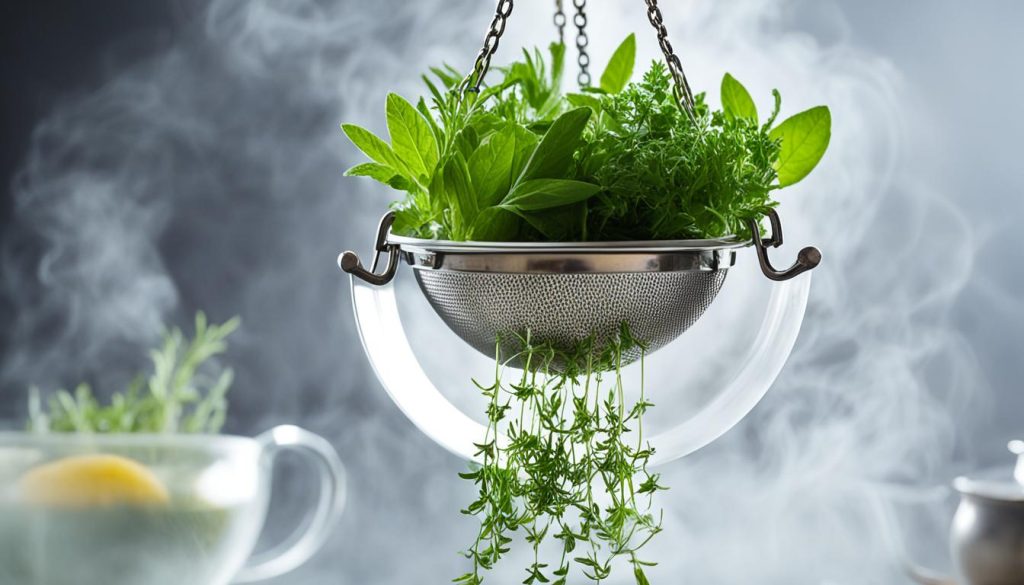
The Benefits of Tea Drops
Tea Drops are a tea lover’s dream come true. These compressed and ground leaf teas offer an instant and hassle-free way to indulge in a flavorful brew. Simply drop a Tea Drop into hot water, watch it dissolve, and enjoy a delicious cup of tea without the need for steeping or using a separate infuser.
What sets Tea Drops apart is their convenience and portability. Whether you’re at home, in the office, or on the go, Tea Drops make it easy to savor a refreshing cup of tea anytime, anywhere. No more poking around for tea bags or dealing with messy loose leaf tea. With Tea Drops, you can enjoy a perfectly measured portion of tea with just one drop.
The benefits of Tea Drops go beyond convenience. These innovative instant teas pack a punch of flavor and aroma, providing all the goodness of traditional teas without the wait time. Tea Drops come in a variety of flavors and blends, catering to different taste preferences. From classic black teas to exotic herbal blends, there’s a Tea Drop to suit every palate.
Moreover, Tea Drops offer a fantastic way to explore new teas and expand your tea collection. With a sampler pack of Tea Drops, you can try different flavors and discover your favorites without committing to a full box of tea. It’s like having a tea tasting experience at your fingertips.
Here are some key benefits of Tea Drops:
- Convenience: Instant and easy to use, Tea Drops save you time and effort in preparing a cup of tea.
- Portability: With Tea Drops, you can enjoy your favorite teas wherever you go.
- Flavor Variety: Tea Drops offer a wide range of flavors and blends to suit different preferences.
- No Steeping Required: Say goodbye to steeping time and enjoy your tea instantly with Tea Drops.
- No Mess: Tea Drops eliminate the need for tea bags or loose leaf tea, keeping your brewing process clean and hassle-free.
So, if you’re a tea lover looking for convenience, flavor, and an instant tea experience, Tea Drops are the perfect choice. Treat yourself to the delightful world of Tea Drops and enjoy a cup of tea that’s both delicious and convenient.
Conclusion
After exploring the wide world of tea steeping, we have discovered a plethora of innovative methods that can elevate the flavor and experience of our favorite beverage. From traditional rituals to modern techniques, each method offers a unique way to unlock the full potential of tea and indulge in a flavorful infusion.
Whether it’s immersing ourselves in the beauty and tranquility of the Japanese tea ceremony, or experimenting with alternative brewing methods like pour-over cone-shaped pots and glass teapots with infused baskets, there are endless possibilities to explore. We can also embrace the convenience of Tea Drops, which provide an instant and flavorful brew without the need for steeping or using a separate infuser.
By embracing these innovative tea steeping methods, we can truly enhance our tea drinking experience. So why not embark on a journey of flavor exploration and indulge in the satisfaction of a perfect cup of tea? We invite you to join us in exploring the world of tea steeping and savoring the delightful flavors that await.
